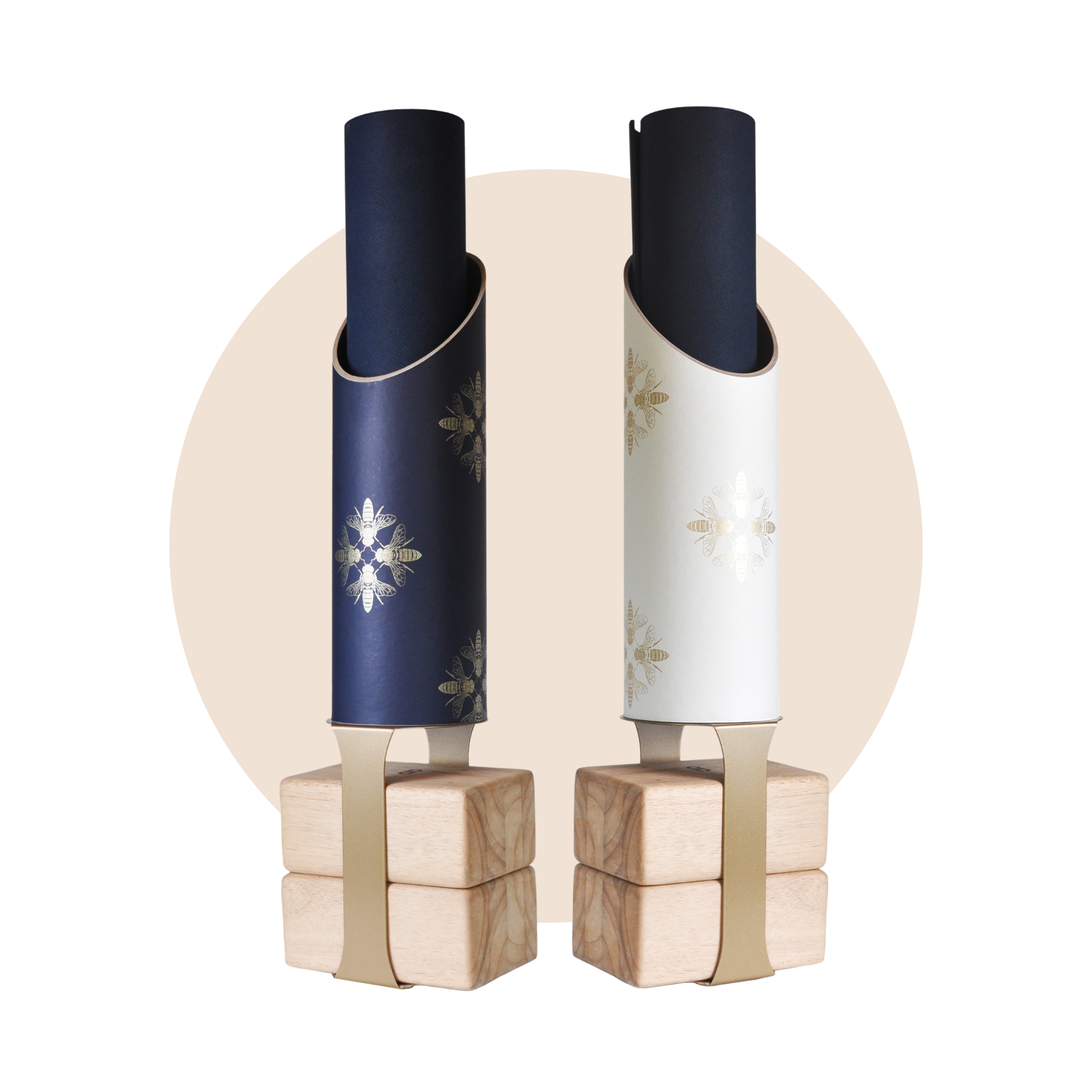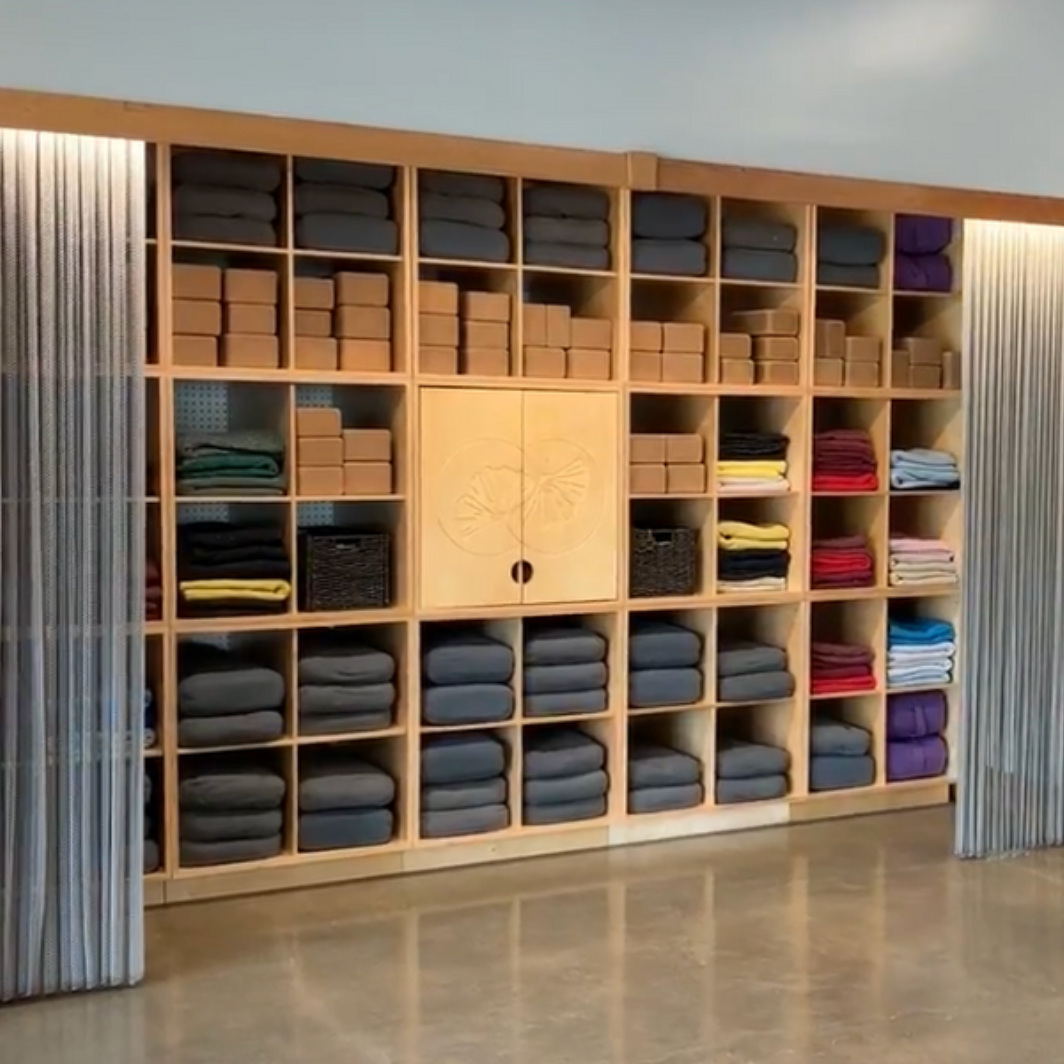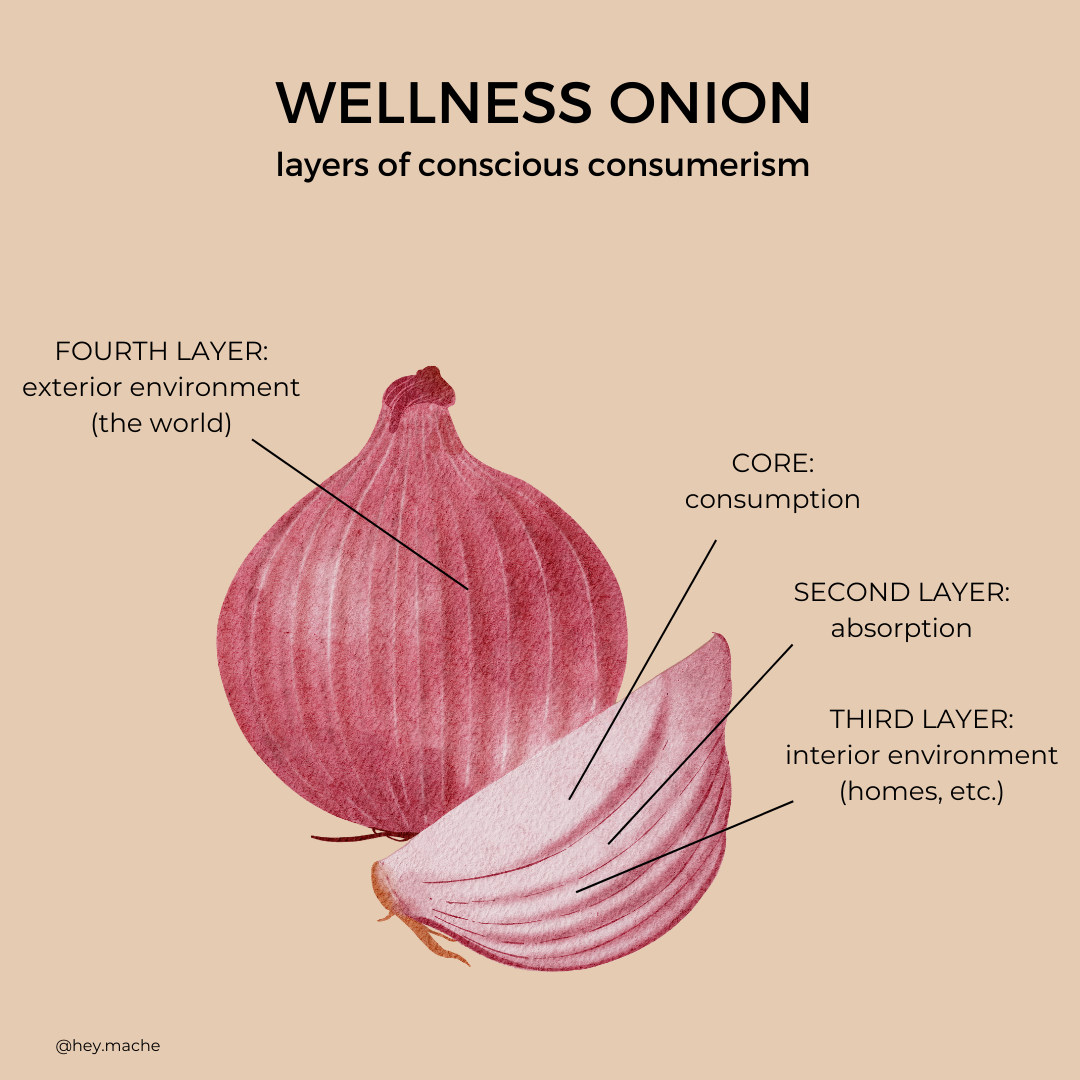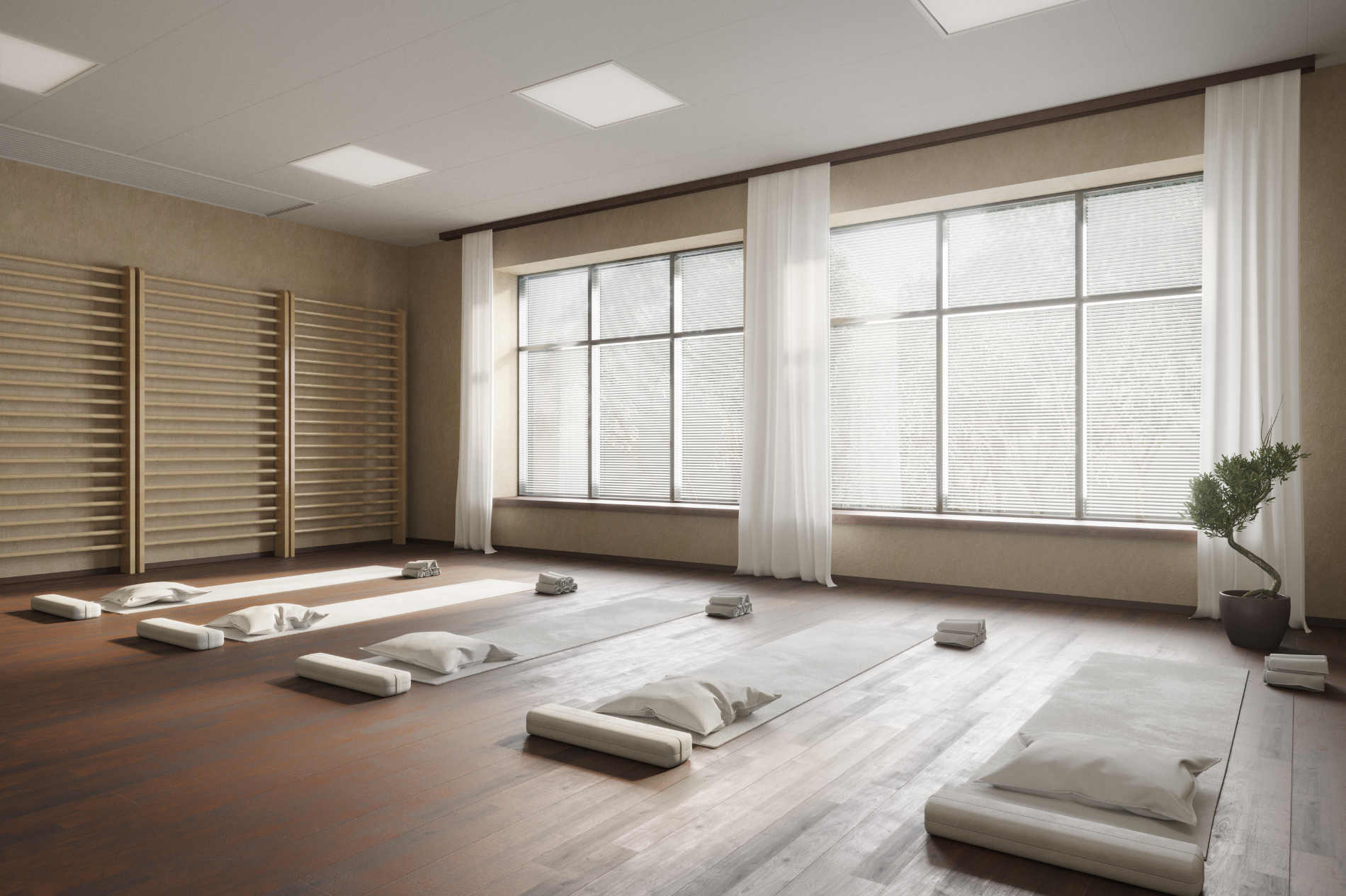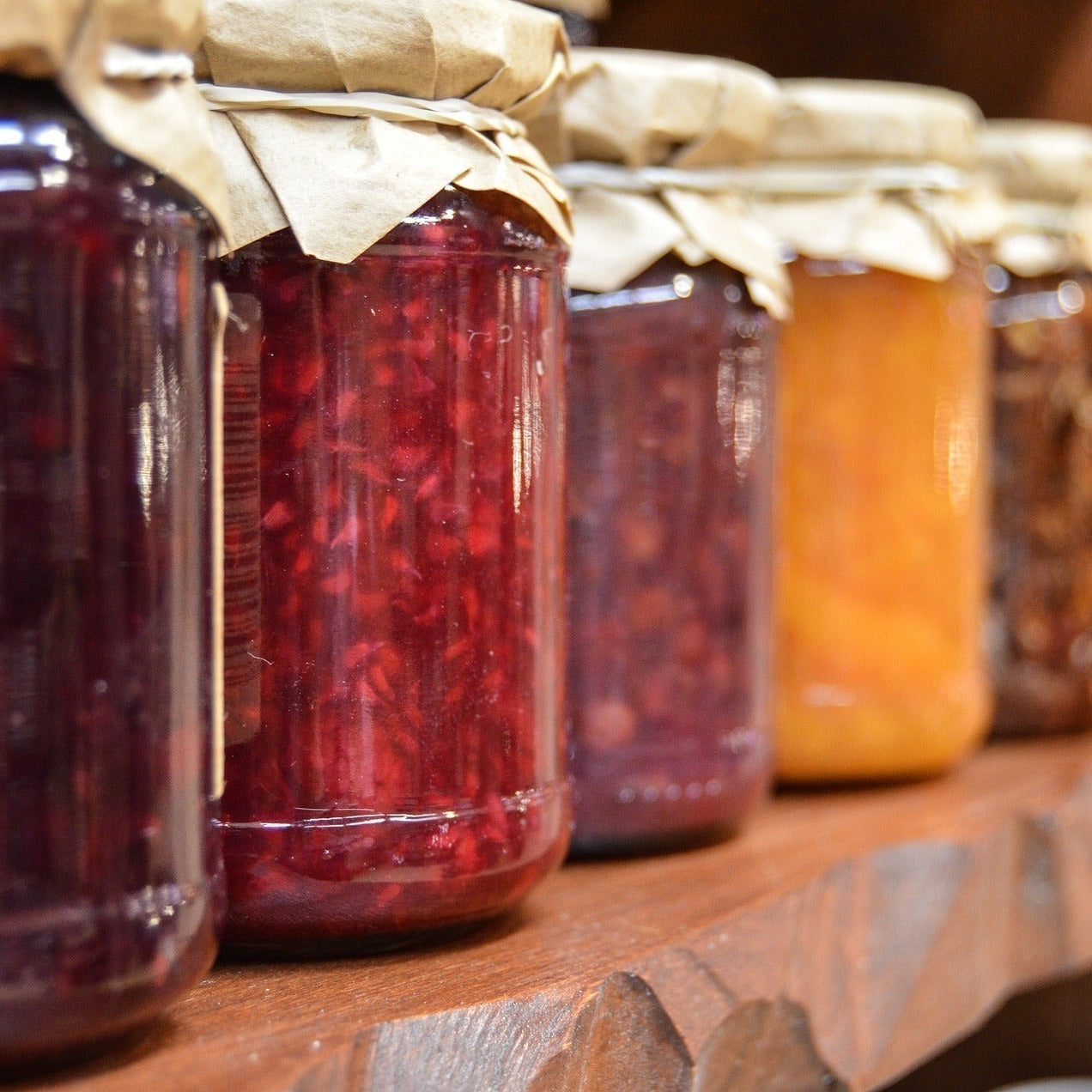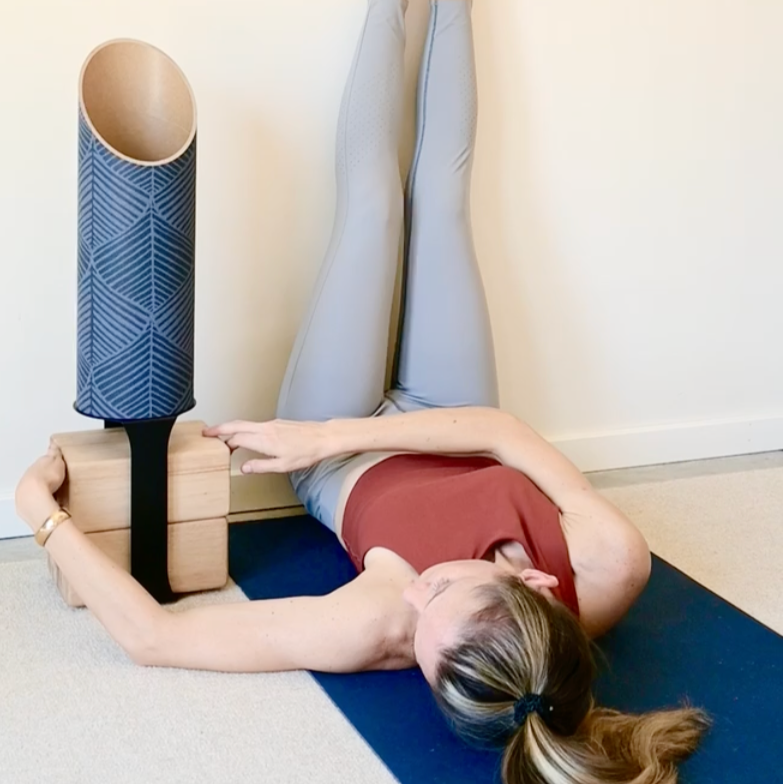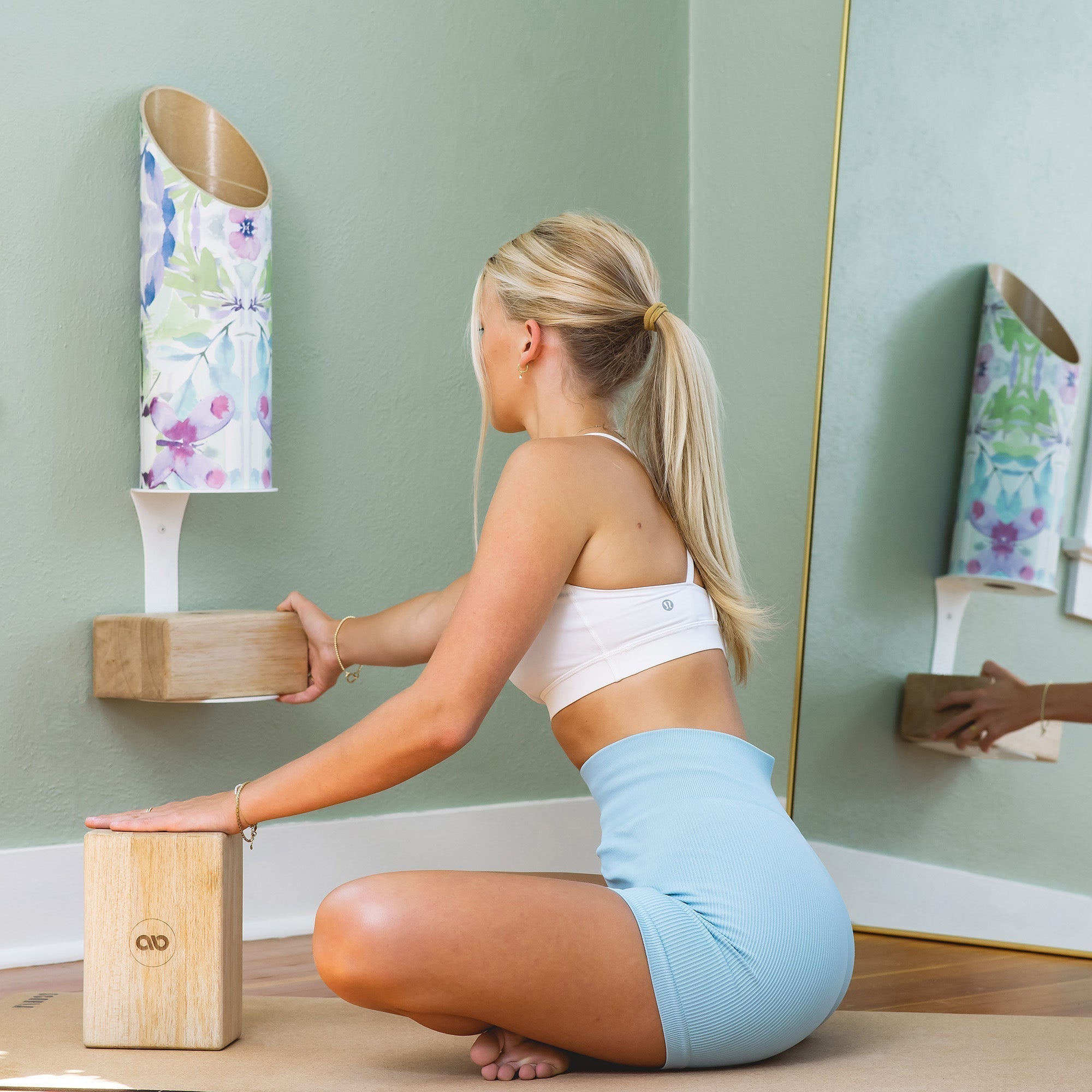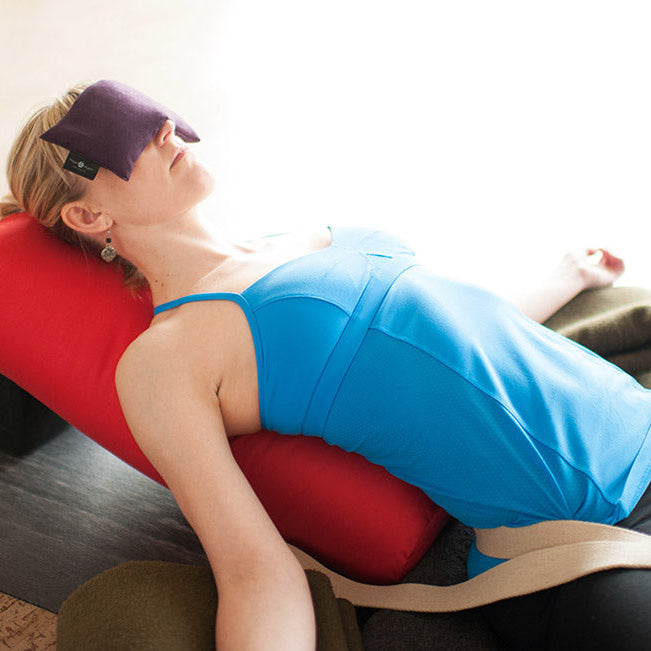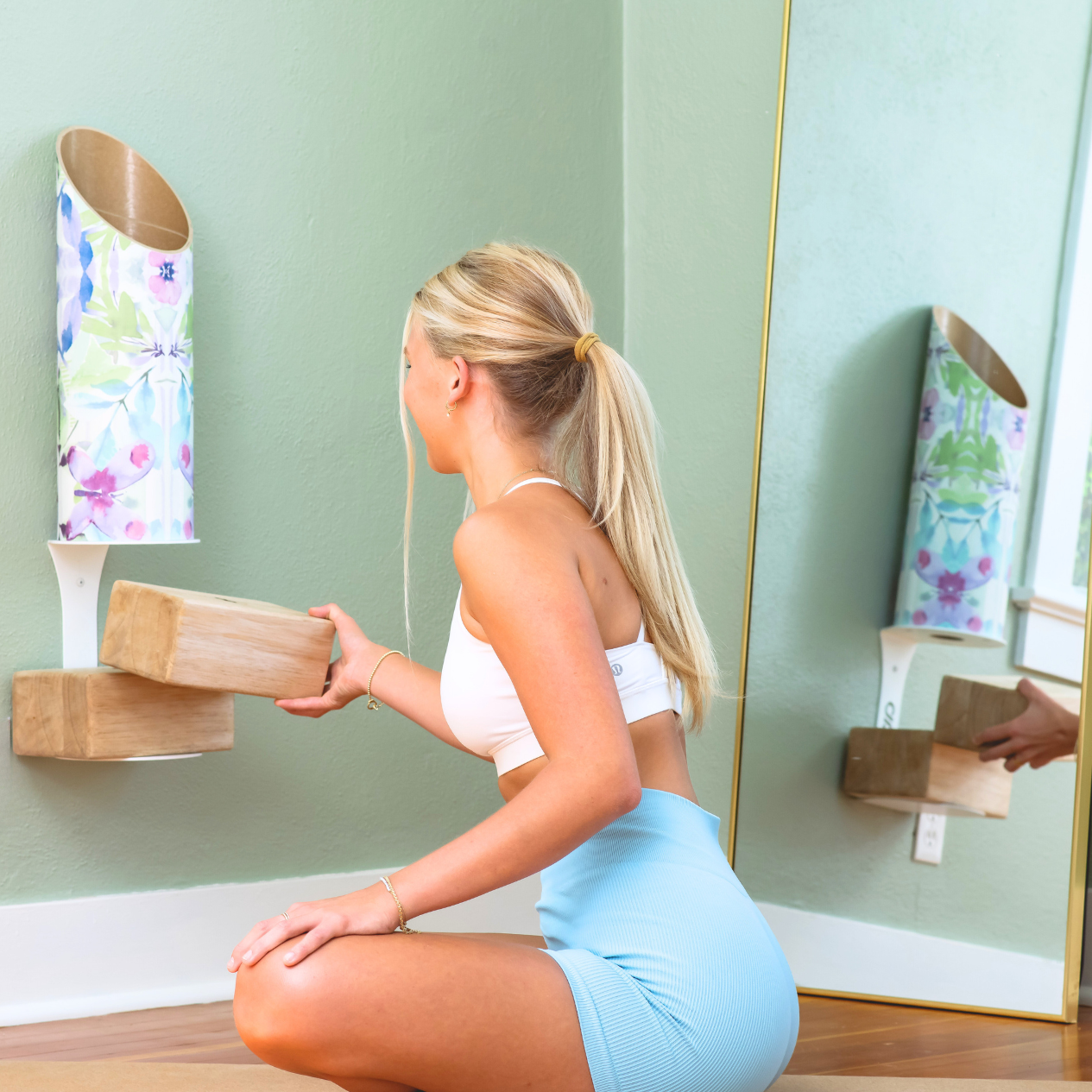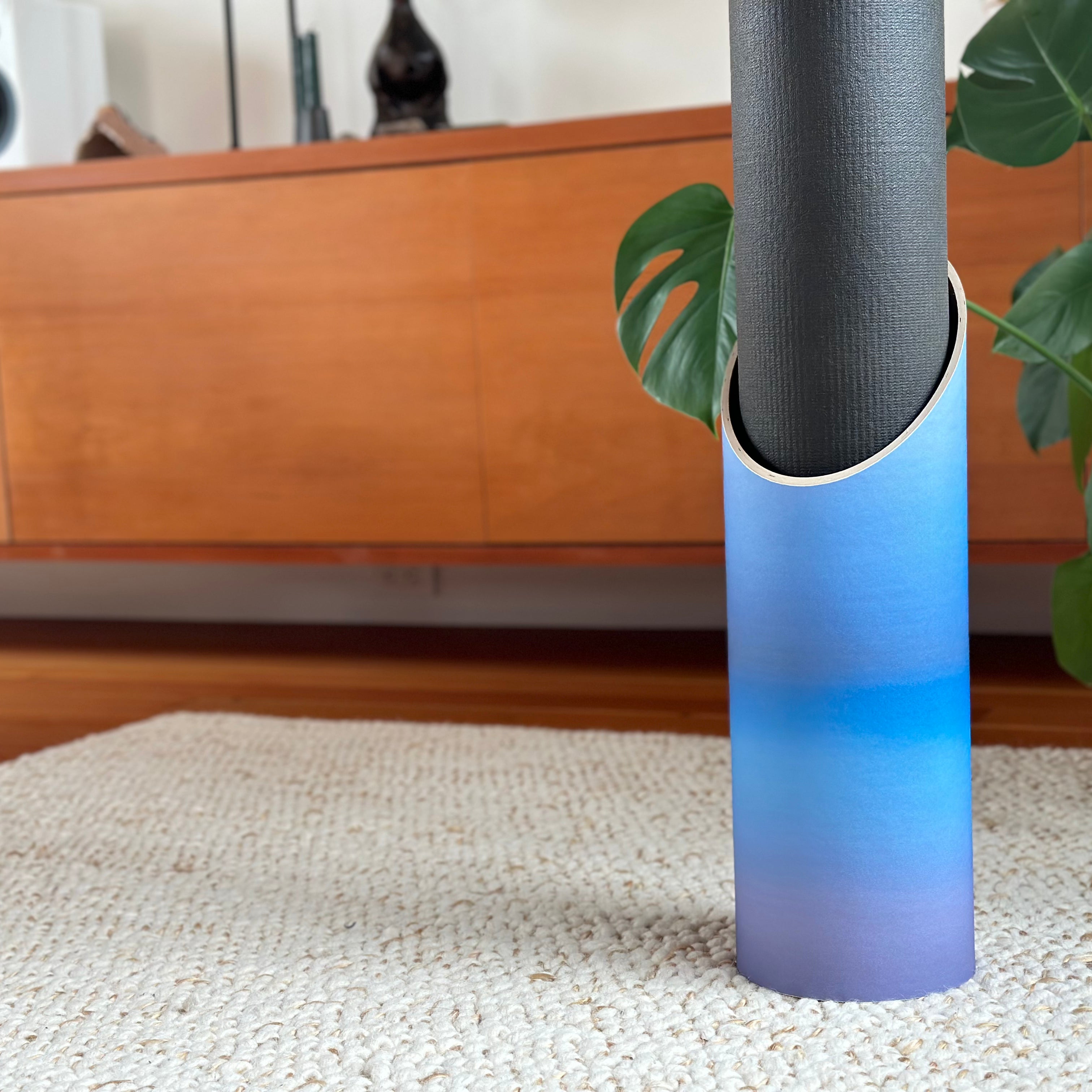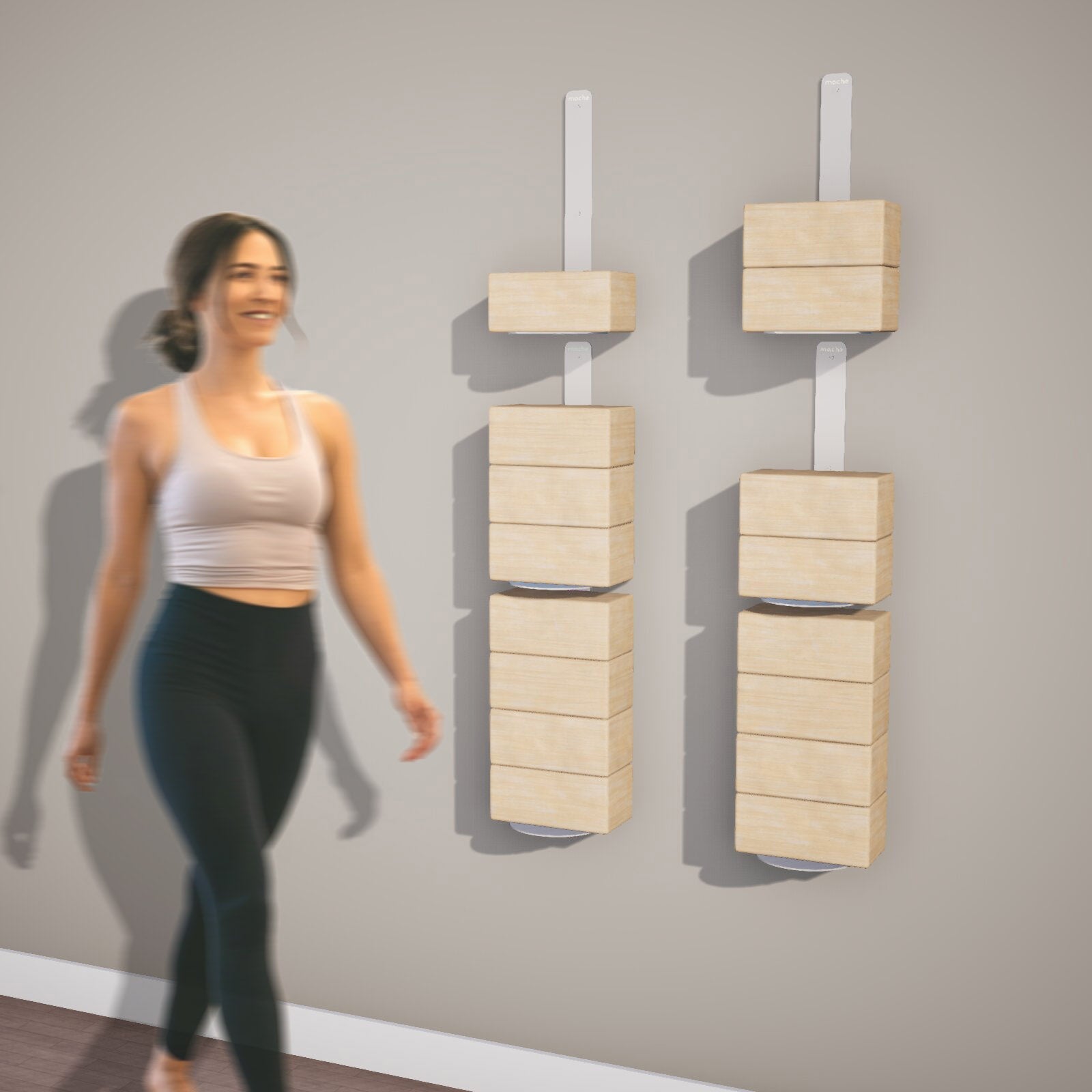In the pursuit of yoga, we strive to create a harmonious union between mind, body, and the environment around us. In order to curate a supportive environment for self-care, we select props, equipment and tools to aid along the yoga journey. The yoga gear collection typically kicks off with investing in a cheap yoga mat and some fitness-friendly apparel. Then, before you know it, you're all decked out from head-to-toe in LuLu with a pile of yoga props in your home yoga space that would put The Leaning Tower of Pisa to shame.
While collecting yoga gear can definitely help deepen and support the practice, you want to be sure that the props and apparel that you choose are not doing you more harm than good. The ugly truth is there is a hidden threat lurking in our modern yoga and fitness industries: off-gassing plastics!
These seemingly harmless plastic products can have a detrimental impact on our health, not to mention all other life on the planet. In this article, we will dive deep into the top five plastics that commonly find their way into our yoga and fitness essentials, explore their potential health effects, and offer sustainable alternatives for optimal wellbeing.

Here are the top 5 plastics in the yoga industry, some of their effects on our health and the health of the planet, and sustainable alternatives to use instead:
-
PVC (Polyvinyl Chloride): The most toxic of the plastics, PVC has been nicknamed "plastic poison" and just happens to be the number one material used to make yoga mats worldwide. Yikes! PVC poses significant health and environmental risks as it contains toxic additives like phthalates and lead, which can disrupt endocrine systems, harm hormonal balance, and even contribute to the development of asthma, autism, and certain cancers. To protect yourself, your loved ones, and the planet, it's crucial to steer clear of PVC yoga mats. Instead, opt for sustainable alternatives such as natural rubber, cork, or fabric-based mats, which provide excellent grip and support without the harmful side effects.
-
TPE (Thermoplastic Elastomers): The "Eco" Choice? While TPE mats are often marketed as 'eco-friendly' and is a blend of undisclosed synthetic materials that have not been proven to be safe. The most common and least expensive form of TPE is made with styrene and butadiene chemical polymers both of which are considered human carcinogens. TPE mats also contain phthalates which can lead to off-gassing and environmental concerns. Moreover, the production process of TPE mats involves the use of chemicals. To truly embrace sustainability, explore yoga mats made from natural and biodegradable materials, like organic cotton or jute, which offer superior breathability and support.
-
EVA (Ethylene Vinyl Acetate): EVA Foam is commonly used in the form of foam yoga blocks, extra thick exercise mats, and puzzle mats. It is considered to be a safe alternative to PVC, as it doesn't require plasticizers like phthalates, and it's BPA free. However, it's important to be aware of a potential concern associated with EVA foam. A few years ago, it was discovered that EVA foam contained a substance called formamide. Formamide is used to make the foam soft, but it's considered to be carcinogenic and a developmental toxin. It can be absorbed through the skin and inhaled through breathing. As a result, Belgium banned children's EVA foam mats in 2011, and France followed suit. To prioritize your health and well-being, consider alternatives like natural cork or wood yoga blocks, which offer similar support without the potential risks associated with EVA foam.
-
PET (Polyethylene Terephthalate): PET is making huge waves in the Yoga Industry as of late with the proliferation of yoga apparel made from recycled plastic fiber. While recycling is a step in the right direction, PET-based yoga apparel made from recycled plastic bottles has concerning drawbacks. As you sweat and breathe deeply, the micro-plastics found in recycled plastic clothing can leach into the blood stream, causing potential skin irritation, as well as gut, hormonal, and nervous system imbalances. With each laundering, these same fabrics then devastate our oceans with microscopic plastic pollution. Choose yoga apparel made from organic cotton, bamboo, hemp or other sustainable fiber, and prioritize the well-being of yourself and the whole planet family.
-
Microfiber: Microfiber fabrics, commonly used in absorbent yoga mats and towels, consist of a combination of polyester and nylon. While they offer excellent absorbency, these materials also shed micro-plastics into the oceans during clothes washing, contributing to plastic pollution in our shared waterways. Opt for organic cotton towels or mats made from natural materials like cotton or hemp, which are gentle on your skin and the environment.
Your yoga practice should be a sanctuary for your mind, body, and the planet. By understanding the harmful effects of plastics commonly found in yoga essentials, we can make conscious choices to protect our well-being and the environment. Embrace sustainable alternatives such as natural rubber, cork, organic cotton, bamboo, and eco-friendly foam, which not only promote your optimal well-being but also minimize the negative impact on our planet. At Mache, we are committed to providing you with sustainable yoga products that support your practice and the health of our world.
Remember, every small step towards plastic-free yoga contributes to a cleaner and healthier practice. Choose wisely, stay informed, and let's join hands in nurturing a sustainable yoga community.
Browse our sustainable yoga accessories + yoga prop storage and make the switch to a plastic-free practice today! Check out 15 creative ways to reuse your old yoga mats.

